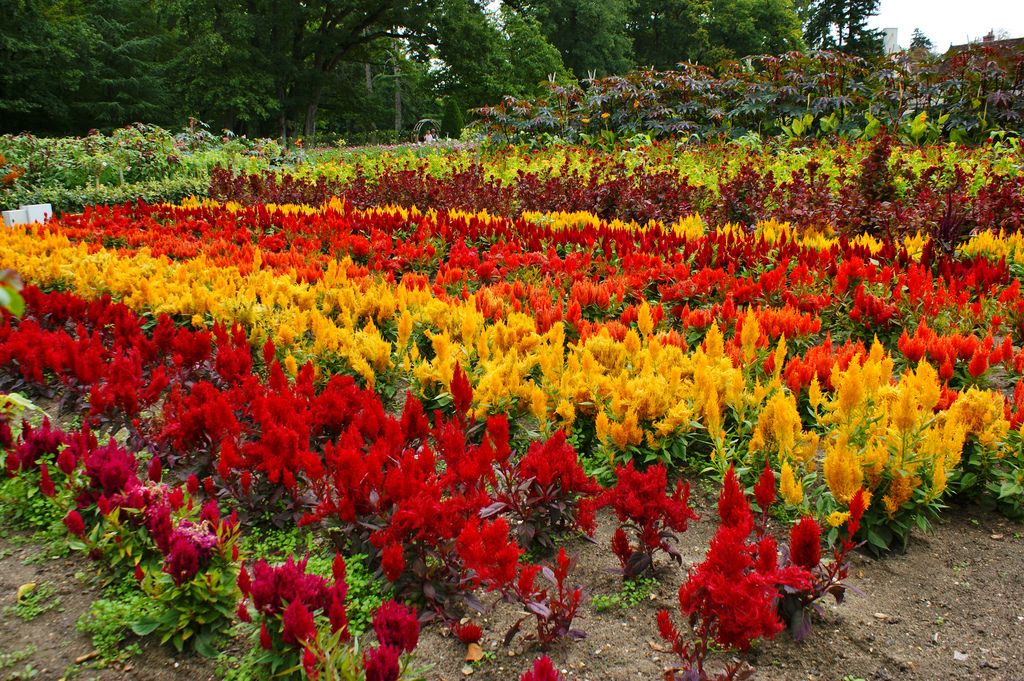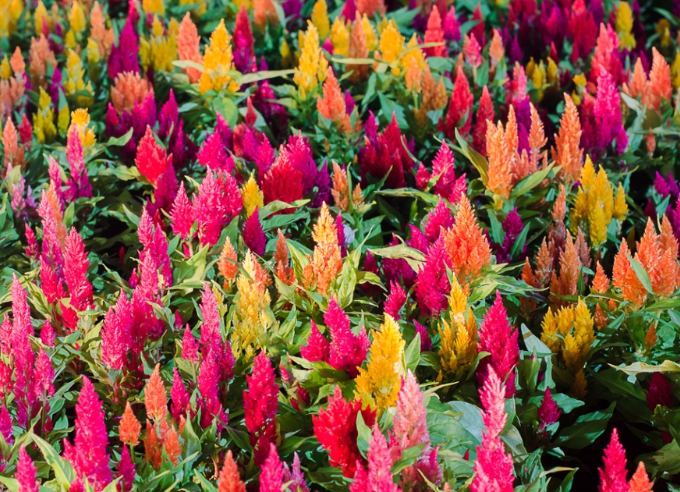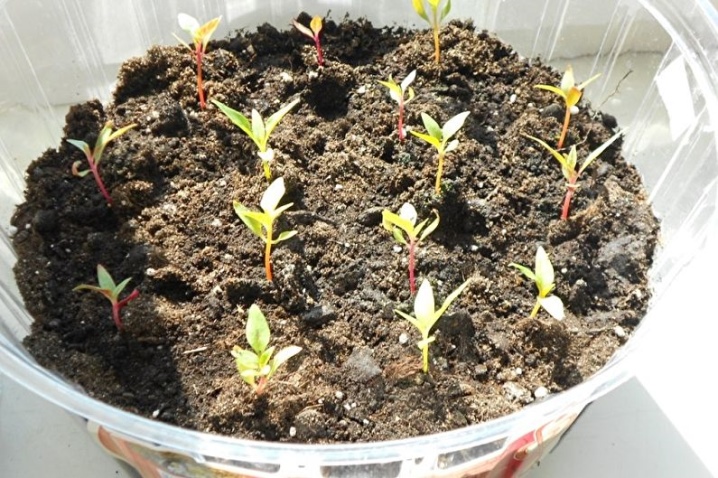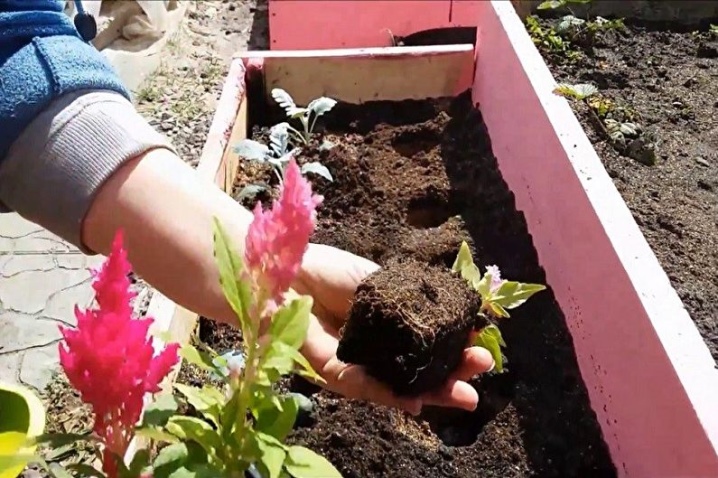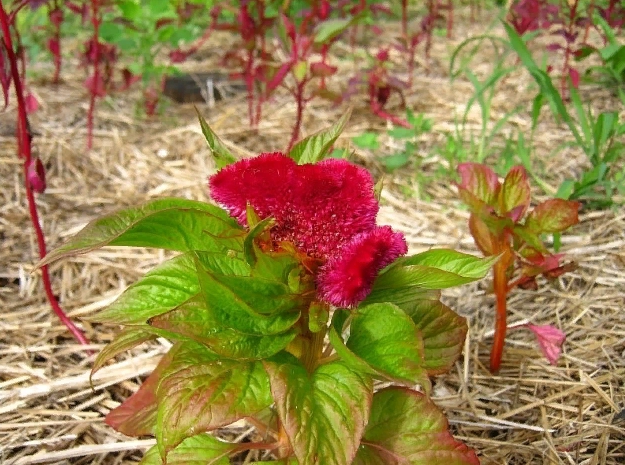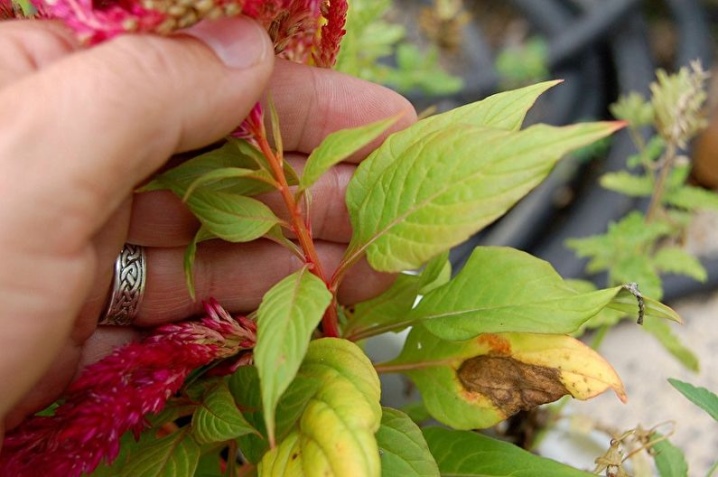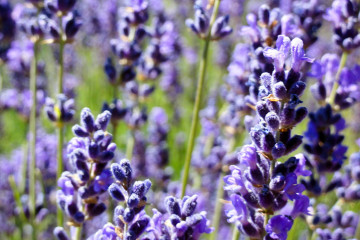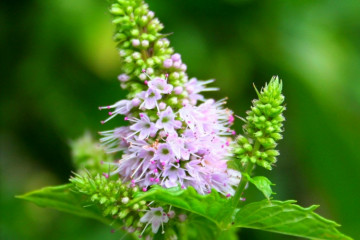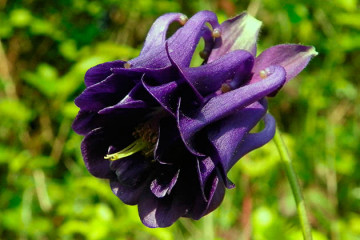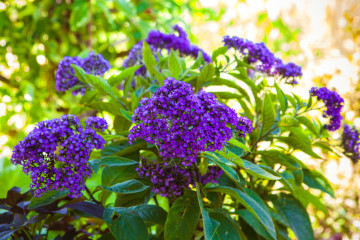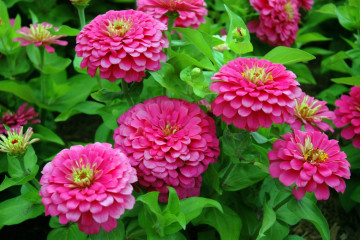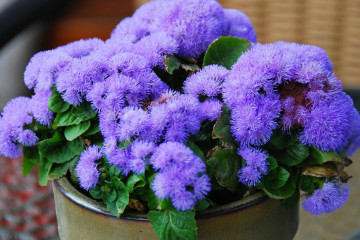Celosia paniculata - growing flowers from seeds in the country
Content:
A bright and luxurious celosia flower can decorate any flower garden. Her beauty has inspired many poets and artists. The name celosia comes from the Greek word "kelos", translated as "flaming", "fiery" or "burning". The name is justified by the conspicuous appearance of the celusion. This ornamental shrub grows upright, has a thick stem and is found mainly in sunny regions of Asia, Africa, and South and North America. Special requirements for growing can be specified in the variety description.
Features of silvery pinnate, or paniculate cellosis
Despite the abundance of flower species, only 3 representatives of the genus are most in demand among gardeners. This is a spikelet, comb and pinnate cellosia, also called paniculate. The latter type comes from silvery celosia, the peduncles of which grow in the form of ridges or form a panicle. In the post-Soviet space, paniculata celosia is the most popular.
What family does it belong to
Celosia is part of the Amaranth family, although not so long ago it was periodically referred to as the Marevs. According to the information base The Plant List for 2013, the genus Celosia includes 51 species of plants of herbaceous and bush type, among which there are both annual and perennial varieties.
Briefly about the history of appearance
This flower came to Europe from Africa, reaching its greatest distribution in European gardens during the Renaissance. The sprouts and young foliage of plants of the genus Celosia, and especially Celosia silvery, have been eaten since ancient times in the territories of India, South America, Indonesia and Africa.
Also, the plant is used as a remedy for blood diseases, blurred vision, worms and ulcers in the oral cavity.
Plant characteristic
Celosia pinnate is an ornamental plant with small flowers growing in panicle-shaped inflorescences. In the wild, the paniculata celosia reaches no more than a meter in height, while the bushes bred in captivity are much lower. The stems of the plant have a bright green color, some varieties stand out with red veins on them. This species is characterized by pointed leaves with a smooth surface. The varieties of brightly blooming celosia, also spelled cellosia, have different colors:
- yellow;
- red;
- purple;
- crimson;
- Orange;
- pink;
- pale tones of the above colors.
Popular varieties
Gardeners grow decorative paniculata as a perennial or annual.It is used as a pot plant, for bouquets or as a base for flower borders. This plant is usually not found in the natural environment of the middle lane, however, thanks to the efforts of breeders, it has partially adapted to its climate.
New Look
This type of celosia reaches from 35 to 40 cm in height, standing out for its unusual color. New Onion has purple leaves and scarlet inflorescences.
Goldfeder
It is a low bush with a height of 25 to 30 cm, blooming with golden panicles with the illusion of a light glow.
Fakelshine
The variety grows tall, producing juicy red inflorescences.
Thomsoni Magnifica
This plant has burgundy flowers and green leaves with a pinkish tinge, reaching 60 to 80 cm in height.
Golden Flitz
This variety reaches up to 80 cm in height. It has orange-golden flowers and light green leaves.
Planting by seeds, seedling method
The propagation of cellosia is most often performed by sowing its seeds. A less popular method is grafting, which is used less often due to the loss of decorative variety.
Time to board
Late March and early April are best suited for growing celosia pinnate from seeds. Disembarkation in the open air should be done only after warm temperatures begin to prevail.
When to plant cellosis on seedlings when grown from seed? The best time for this is the 2nd half of May.
Capacity selection
The best option is to immediately plant the seeds in small separate pots, whose diameter is about 8 cm, and the depth is 4-5 cm, before picking. This will contribute to the preservation of the roots when planting in open areas. After the pick, you will need deeper containers.
When growing without picking, containers with a large margin of depth are immediately used.
When sowing seeds in seedling containers, at least 3 cm should be left between the seeds. After the seedlings have grown a little, they should be planted separately in pots with the above parameters.
Soil and seed preparation
Before planting, the seeds are soaked in a solution of "Epin" and "Zircon" for 3-4 hours (for one glass of liquid, a drop of each substance is enough). This will soften the surface of the seeds.
For seeds, a soil mixture of humus and vermiculite in a 50/50 ratio is suitable. The seeds are not added dropwise, but pressed into the surface of the substrate, after which they are lightly sprayed with a solution. Cover the pots or box with seedlings with foil. The seeds should be well lit, but not in direct sunlight. The first shoots of them will appear within a week, the film can be removed after another 7 days.
When planting seedlings in the ground in an open space, the site should be loosened. The soil should be loamy, sandy loam or neutral. If the ground is heavy, a little sand is poured into it when planting. The soil must be of low acidity, otherwise it must be mixed with lime.
Plants are planted in rows at least 20 cm apart for low and 30 cm for tall varieties.
The open area should not be shaded, exposed to winds and have groundwater close to the surface.
It will also be useful to lightly fertilize the ground with humus, the amount of which is determined by the type of soil. Fresh fertilizers will harm the seedlings.
Seedling care
The seedling soil should not dry out, however, excess moisture can cause rotting of both seedlings and adult plants. Young shoots should be watered in the morning.The recommended temperature for their content is from 17 to 20 ° C. After removing the film, small cellosis also need ventilation. The culture planted on the site requires care and attention.
If you feed the seedlings with organic matter or nitrogen, this will make them more powerful, but it will have a bad effect on future flowering. The first feeding is recommended to be performed 10 days after planting.
Dive
Due to the high vulnerability of the root system of this flower, the most suitable method of transplanting it is transshipment.
Watering is stopped a few days before this dive method is performed: this way the earth will more easily come out of the container. The cups or pots with seedlings are turned upside down, after passing the sprouts between the fingers. The container is carefully removed from the ground; at the same time, you can press on the bottom of the plastic cups with your finger for convenience. After placement in an open area or in a new container, where the voids should be covered with an identical substrate, the seedlings are well watered and fertilized with a solution of mineral fertilizing.
It is also recommended to leave new pots in the shade for 1-2 days. When grown in pots of peat and humus, planting cellosis in the ground or new pots is carried out directly in them.
The pick is performed after the formation of 2-3 leaves. Seedlings will require feeding, but it should not be applied before the seedlings take root.
When growing celosia at home, it is planted in a permanent pot at the beginning of summer.
Features of planting in a seedless way in open ground
Given the resistance of the seeds to soil cooling, in addition to spring, they can be sown in the garden or in the country in late October or early November. When planting the soil immediately in an open area, they begin to prepare it in a week so that the soil has time to settle. Also, when sowing, it is useful to adhere to the following recommendations:
- before sowing, sand is added to the seeds;
- they are sown as rarely as possible in shallow rows;
- the rows are sprinkled with soil a little;
- the soil should be moistened and mulched with a thin layer of humus;
- for the shoots to grow strong, the seedlings must be thinned out.
Features of care in the garden
In addition to timely watering and feeding, this plant should be provided with suitable growing conditions. Celosia is a rather demanding flower.
What conditions do celosia like
Growing in arid regions, this shrub loves warmth, good lighting, and adequate watering. When grown at home, in a room with a cellulose, the air should not stagnate.
What is the plant afraid of
Celosia does not like shade, winds, excess or lack of moisture, coolness, as well as groundwater close to the surface of the site.
Watering
The plant must receive enough moisture, otherwise the formation of peduncles may slow down or stop. At the same time, waterlogging for a flower is more harmful than drought, therefore, the celosia is watered in the morning under the root once every 3 weeks. On especially hot days, watering can be increased up to 1 time in 5-7 days. The signs of water shortage are drooping foliage and stopping flower formation. Only the top layer of the soil can dry out.
In the heat under room conditions, the flower should be periodically sprayed.
Mulching
This procedure will help prevent the spread of weeds, evaporation of moisture from the soil, and also relieve the need for frequent loosening of the root soil after watering.As a mulch, plant material such as sunflower cake, nut shells, pine needles, sawdust and dry grass are suitable.
Loosening
After laying the mulch, as in its absence, you should sometimes loosen the soil. This will prevent the development of stagnant processes in the soil and maintain air access to the roots.
Top dressing
The flower can be fertilized at the same time as watering. To do this, 15 g of complex mineral dressing is diluted in 5 liters of water. Also, the plant is moderately fed with stale bird droppings. You should not apply fertilizers more than 1 time in 3 weeks, otherwise they will stimulate the growth of leaves, and not the flowers of cellosis.
When and how does paniculate celosia bloom
This herbaceous shrub is characterized by vibrant colors that vary from cultivar to cultivar. The time of the beginning of flowering in representatives of the genus Celosia also differs, however, in most cases, bright panicles of celosia are capable of pleasing the eye from early to mid-summer until the onset of cold weather.
Types of flowers
Popular varieties of cellosia pinnate or paniculate also include:
- Celosia Caracas, producing bright purple panicles.
- Glorius. A variety of pink celosia, although there are subspecies of other colors.
- Kimono. A branching plant with dense foliage, reaching 15 cm in height. It blooms in cream, burgundy and orange flowers.
- Celosia Pampas. It has massive fluffy inflorescences of red and orange flowers.
In addition to paniculate celosia, 2 more types of this flower are popular in the post-Soviet space. To distinguish them from pinnate cellosis, one should be guided by the appearance and height of the inflorescences.
Flower shapes
In the genus Celosia, there are 3 main forms of inflorescences. Paniculata celosia lives up to its name, releasing panicles of different colors and thicknesses, depending on the variety. Flowers of spikelet celosia also bloom in panicles, but they look more like spikelets. The comb celosia forms from a multitude of small flowers a semblance of a cockscomb with convolutions on top.
Flowering period
Paniculata celosia begins to bloom in early summer and is pleasing to the eye before the onset of autumn frosts.
Changes in care during flowering
During flowering, watering is increased, its maximum frequency is 1 time in 3-4 days. With a lack of water, the plant will cease to form peduncles and will wilt. The soil in adult plants can dry out only from above, however, waterlogging and stagnation of moisture in the root system should not be allowed.
Post-flowering care
Celosia is not adapted to the cold of the middle zone, therefore, after flowering in an open area, it is disposed of. There are several common uses for this plant. Growing at home allows you to provide the necessary conditions for the transfer of cold weather.
Seed collection
Bushes that have begun to wither are suitable for collecting seed. They are plucked to be placed in a container without water and kept without access to sunlight until the plants are properly dry. After that, the seeds are simply shaken off on the newspaper.
Another way to collect seeds is to hang the collected plants over a newspaper sheet. As the seeds ripen and dry, the seeds themselves fall onto the newspaper.
Dry bouquets can be made from celosia inflorescences by removing leaves from them and tying them in a bundle. So they are stored until dry in a room without light and with good ventilation, after which they are placed in a dry vase.
Preparation for wintering
Temperatures below 5 ° C are very harmful to the flower, so for the winter, plants should be removed from gardens or balconies to a flower garden, or kept at home. The temperature for winter keeping cellosi should not fall below 18-20 ° C.
The bushes should be well lit and kept at high humidity, the absence of which is compensated for by periodic spraying.
Possible growing problems
The list of threats to the health of a flower includes such standard factors as infections, parasites and poor conditions.
Pests
Most of all, aphids, which can quickly absorb a significant area of the flower, love to feast on celezi. Among the agents used to protect the plant, the most popular are "Aktara", "Aktellik", "Inta-Vir", "Iskra Bio" and "Fitoverm". A simple solution consisting of 2 tsp is also effective. liquid soap, 2 tbsp. water and 1 tbsp. l. vegetable oil passed through cheesecloth.
Diseases
The most dangerous ailment of cellosis is considered to be a black leg, which is usually the result of waterlogging of the soil or watering on cloudy or cool days. It can be prevented by frequent loosening of the soil near the bushes. Areas of the plant affected by the disease are treated with such antifungal agents as "Skor", "Strobi", "Brunka" and "Topaz". With this disease, the soil at the stem is loosened and mixed with ash, and watering is temporarily stopped. Sometimes transplanting can help, in advanced cases, the plant is destroyed.
High acidity of the soil can cause chlorosis, which is treated with agents containing iron compounds.
Signs of improper care
The following symptoms may indicate a painful condition of the plant:
- withering;
- the dominance of insects under the leaves;
- blackening of the stem;
- twisted foliage;
- yellow spots on the leaves or their blanching;
- thinning of the stem.
Celosia (annual or perennial) is a common decoration of flower beds, borders, rabatok, hedges and a good solution for landscape design. With its help, you can create all sorts of multi-colored compositions. With no less success, this magnificent flower is also used for bouquets. Low decorative varieties are suitable for ennobling balconies and verandas. Celosia is unpretentious, but very gentle, so it should be properly looked after. Despite the plant's heat-loving nature, it feels good in the middle lane in warm seasons. In the south, herbaceous shrubs of the genus Celosia can also be grown as perennial flowers.
